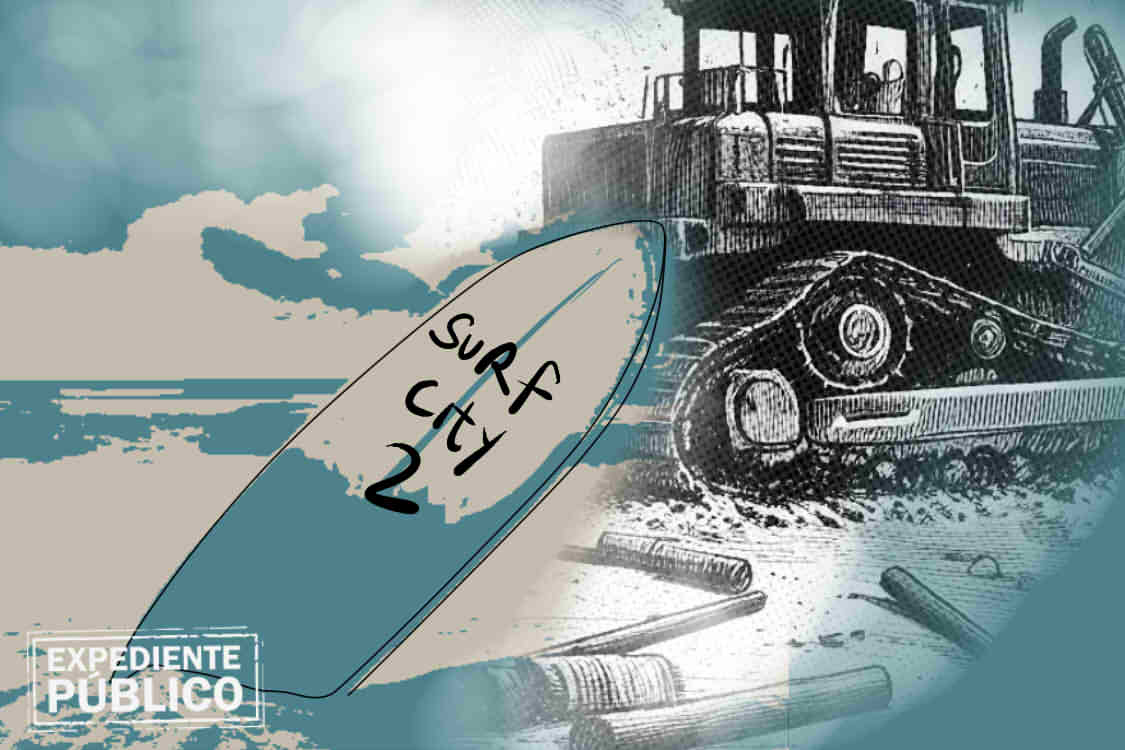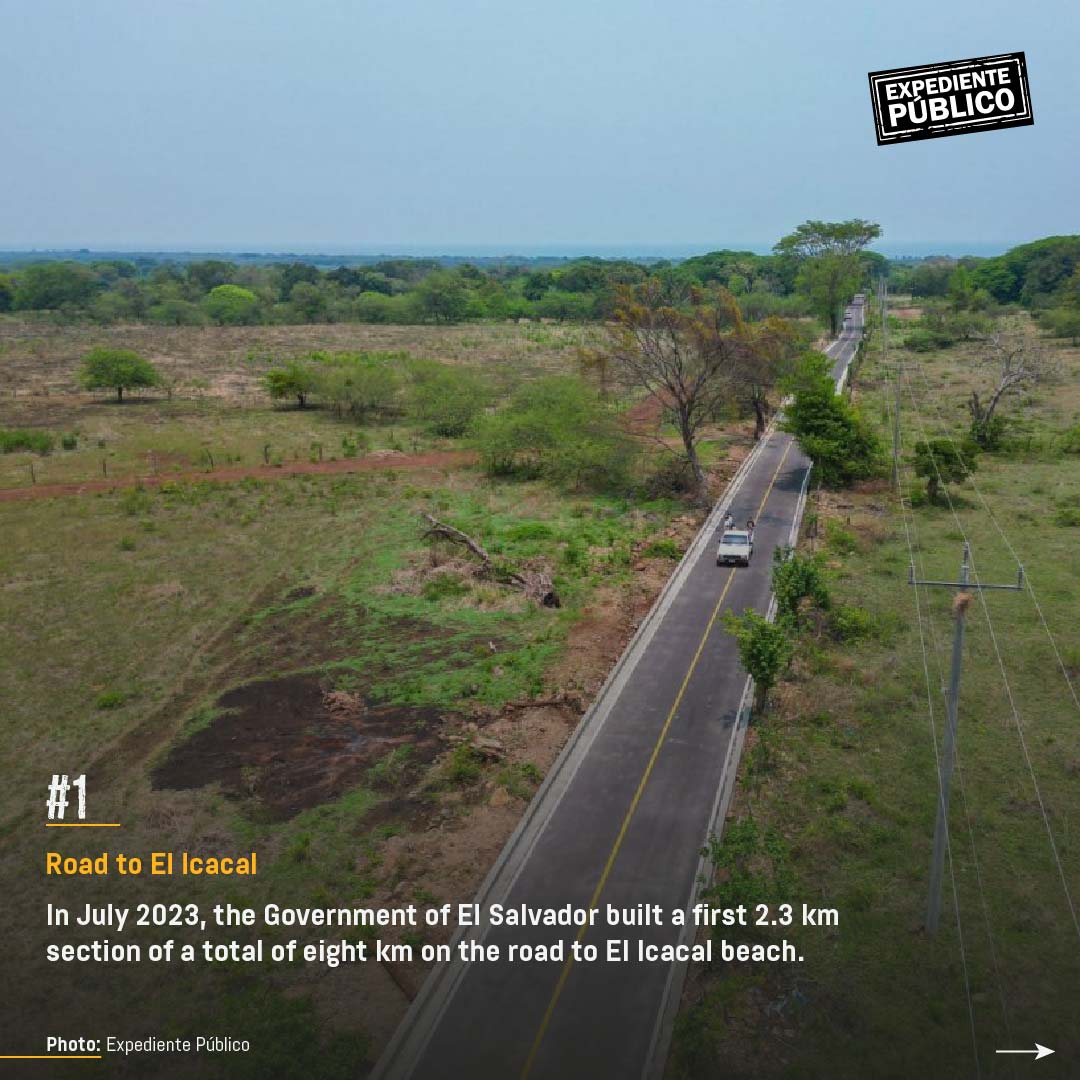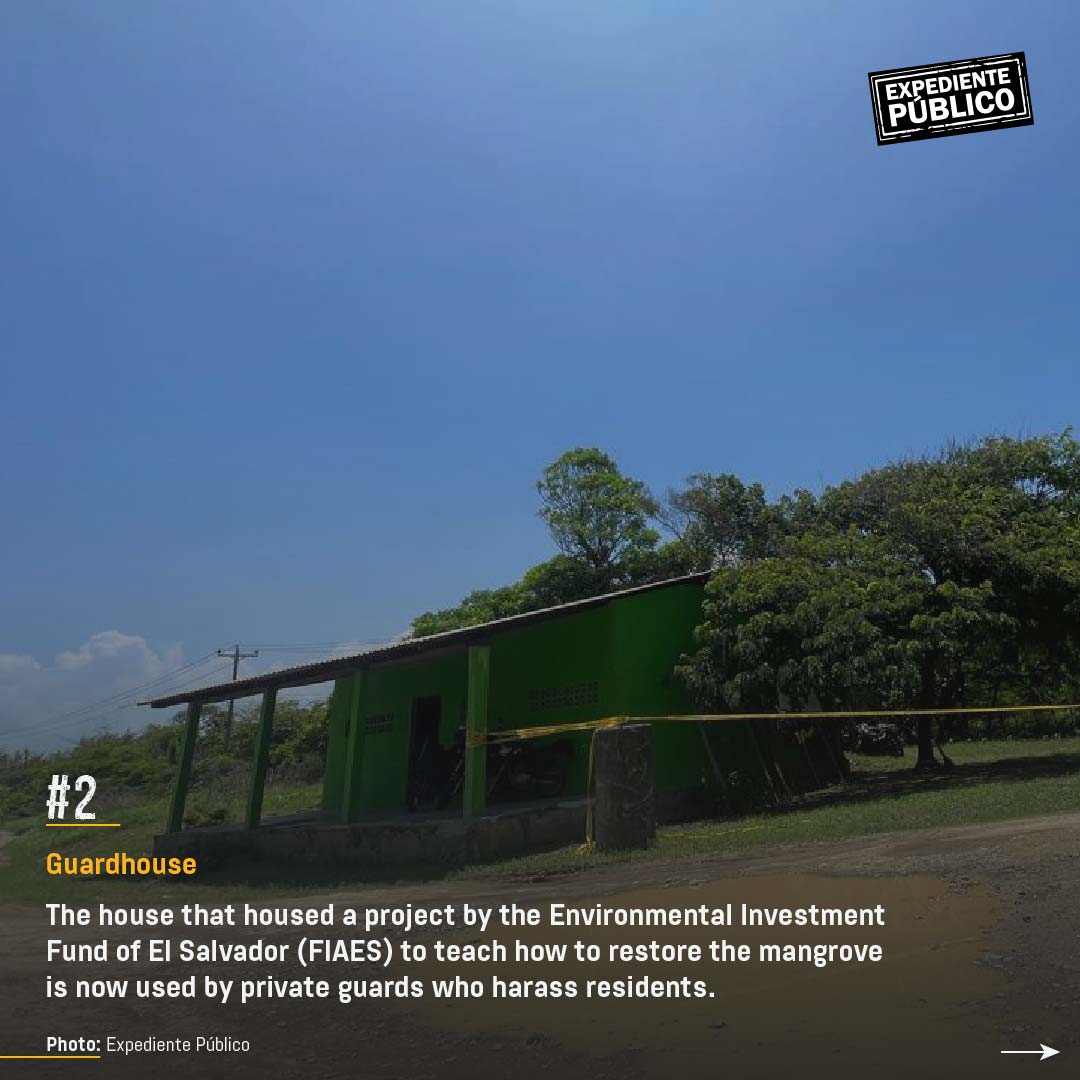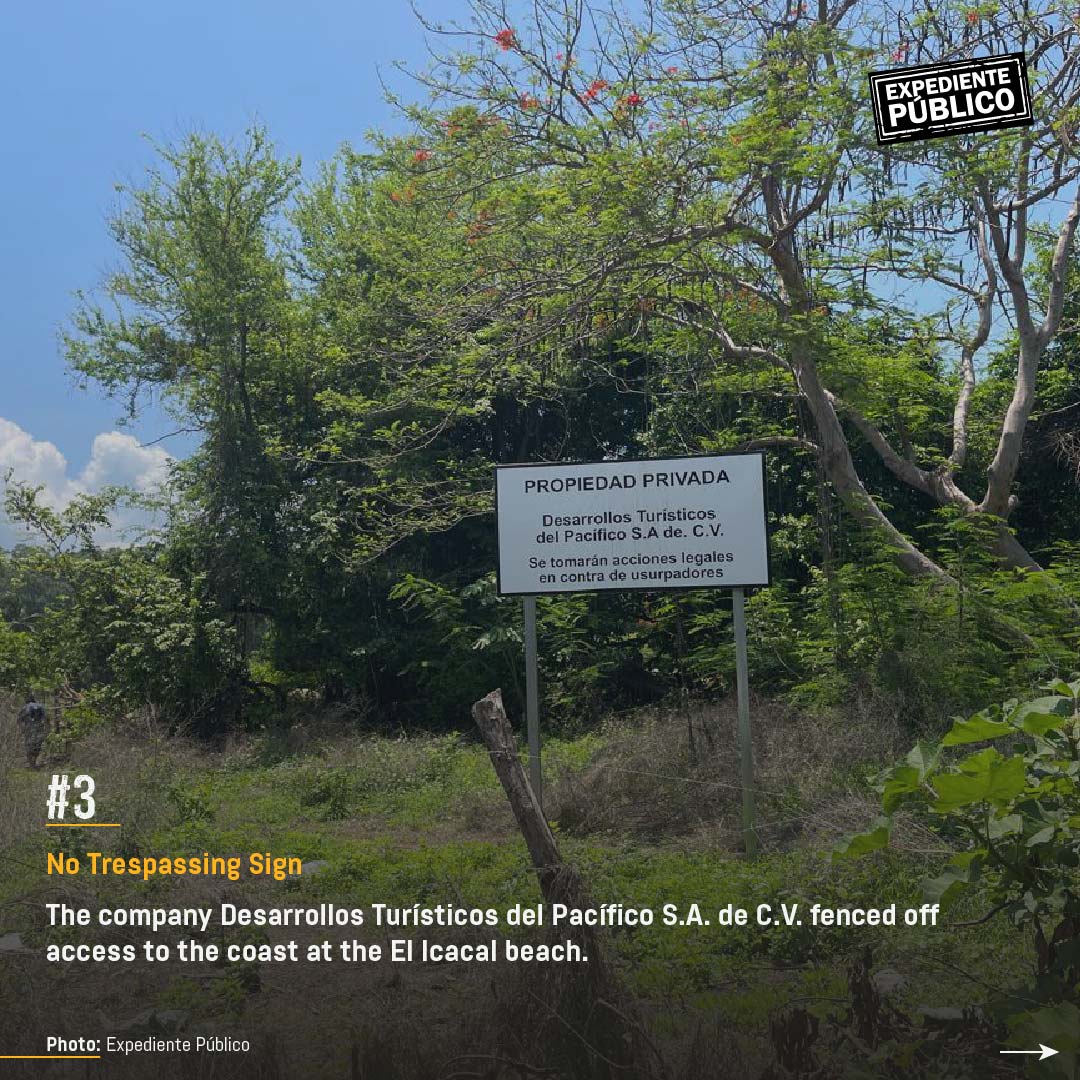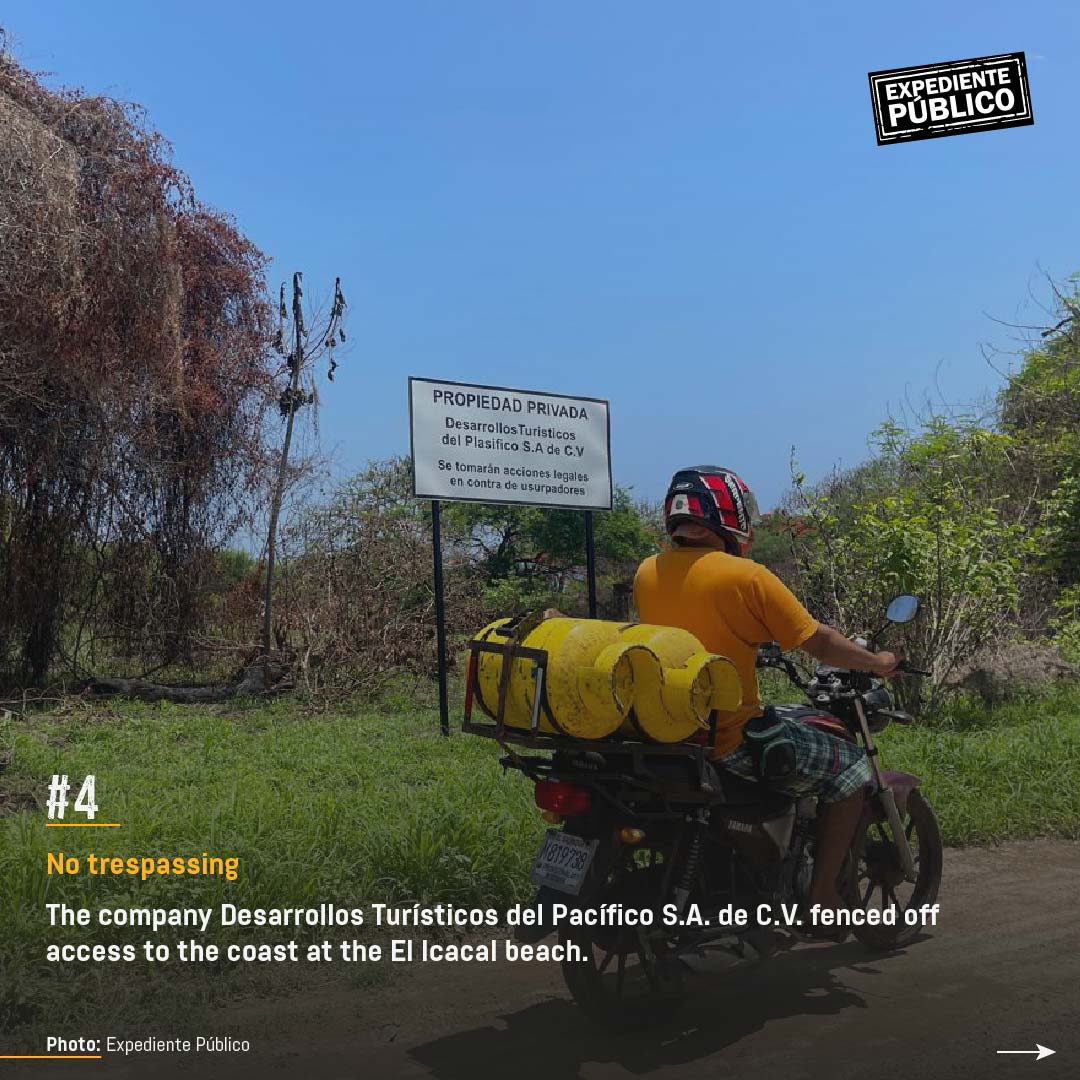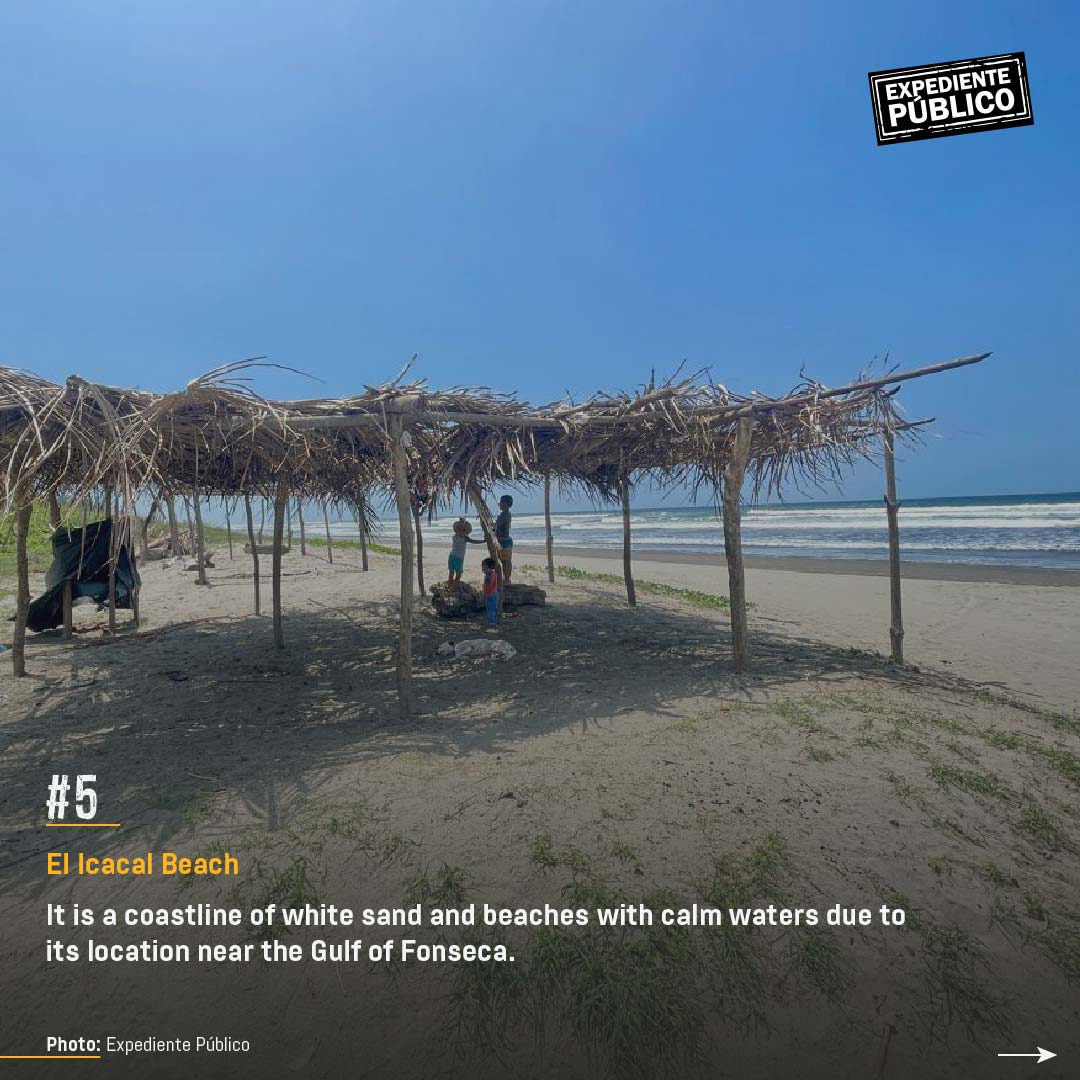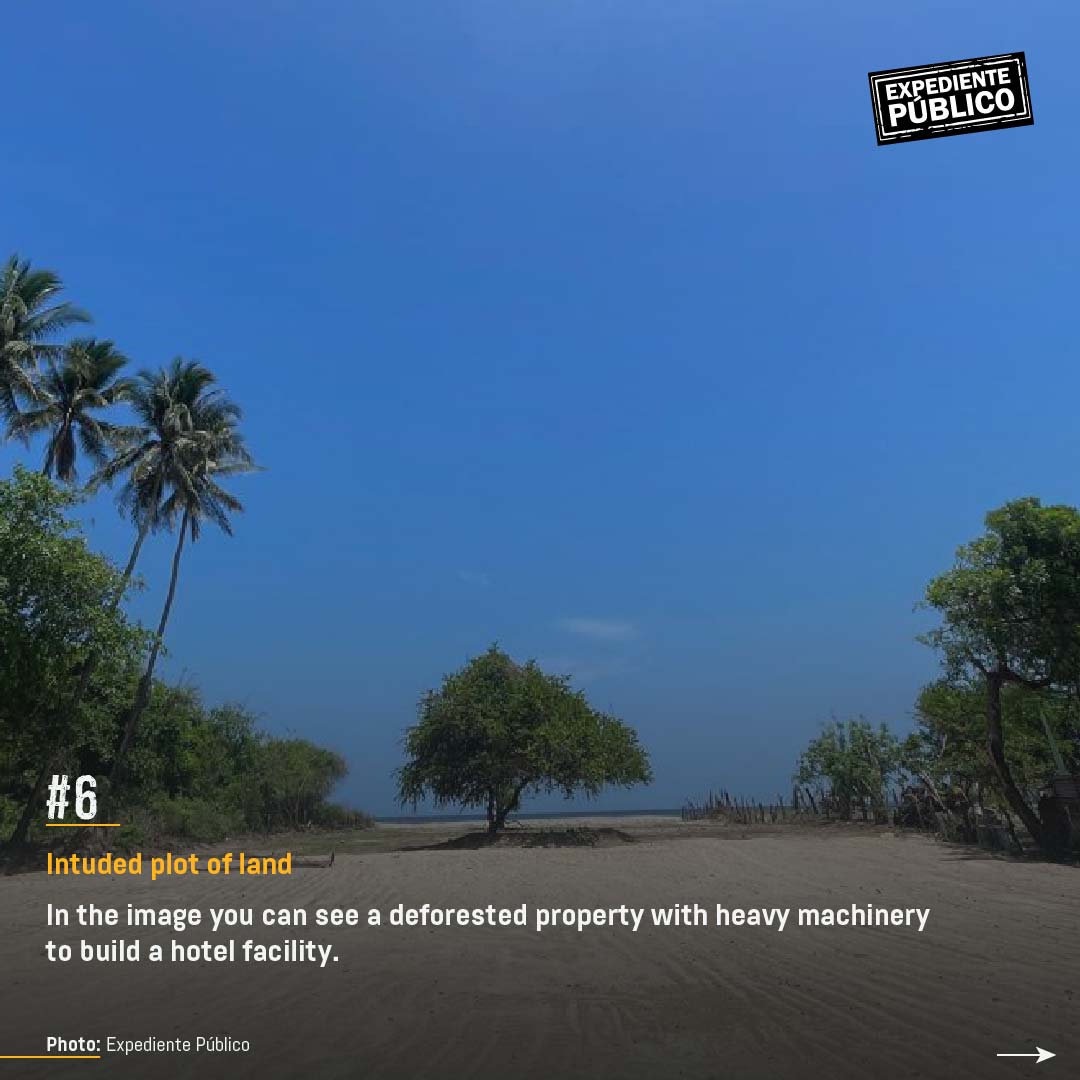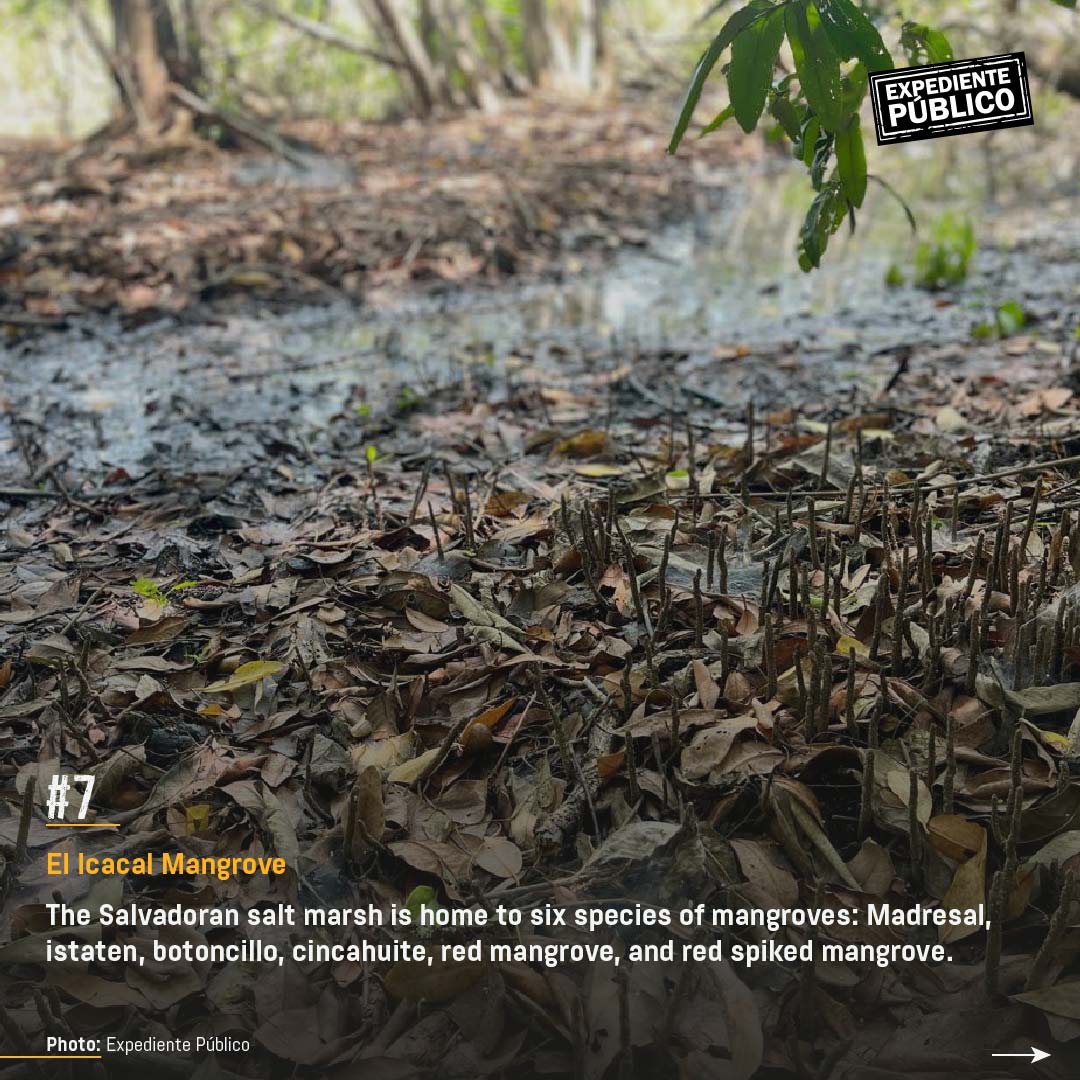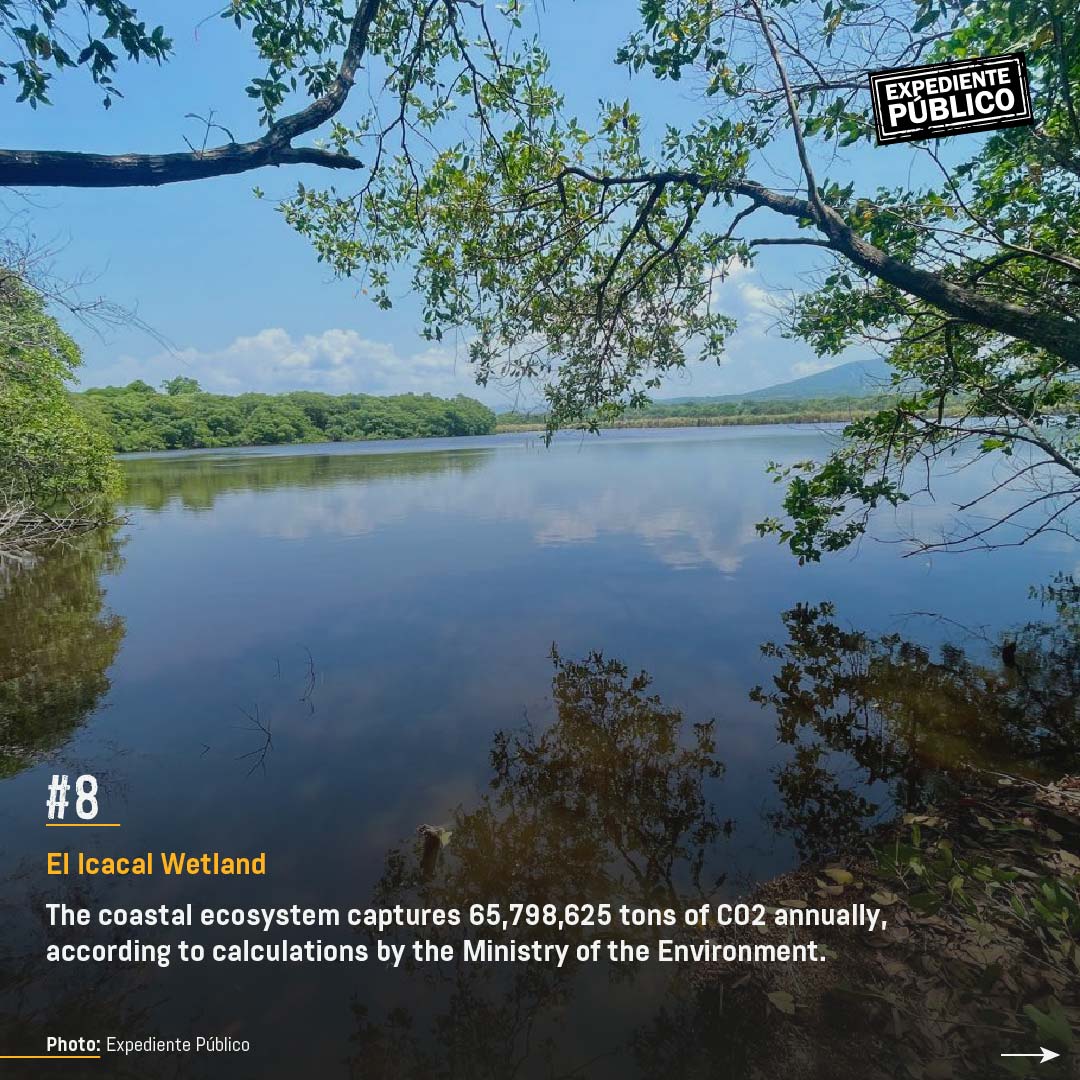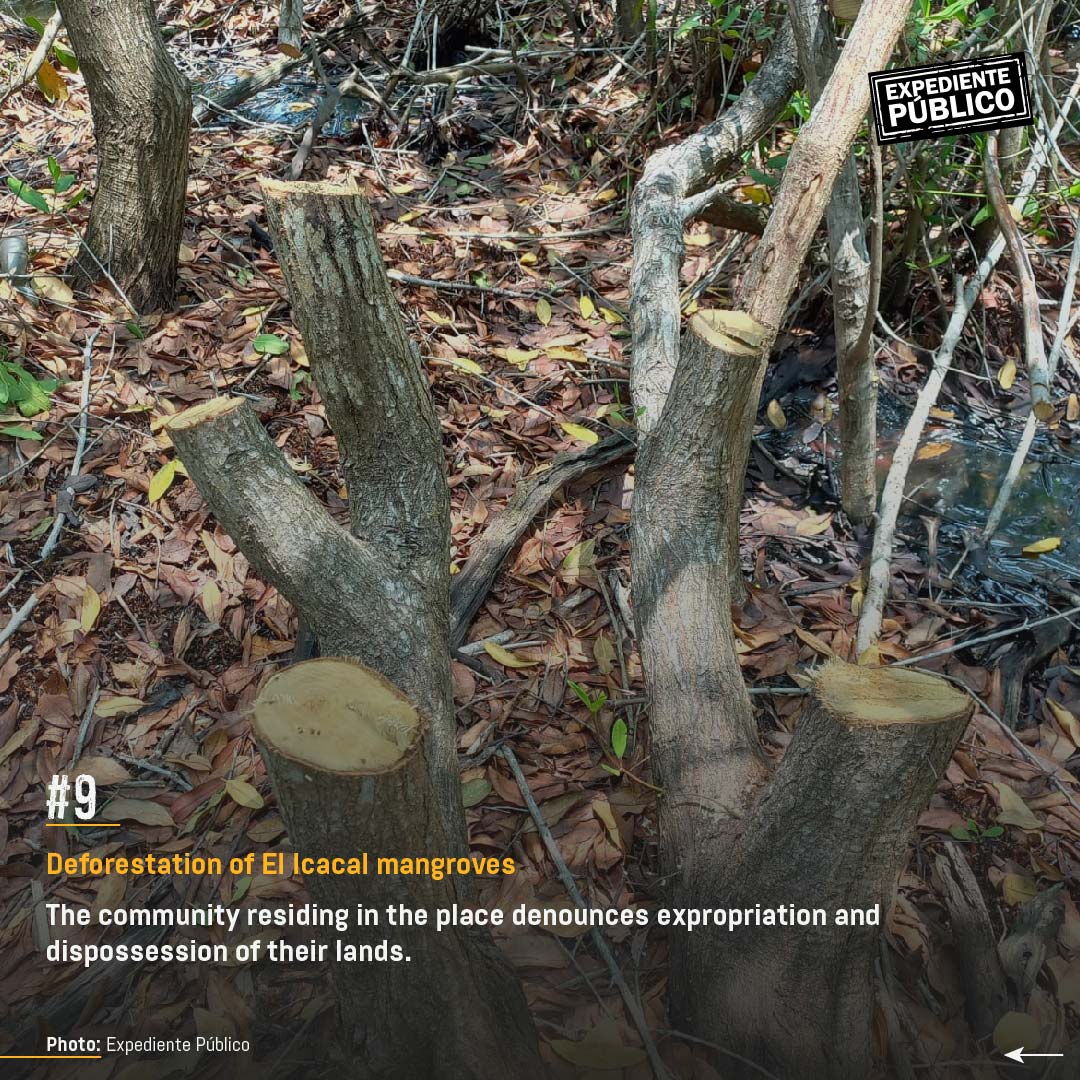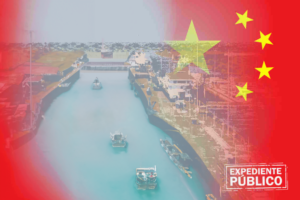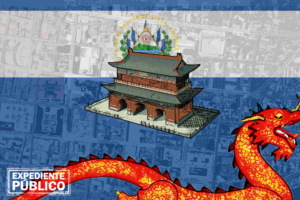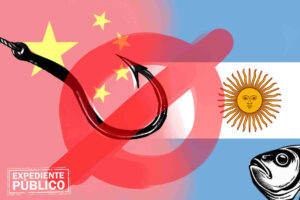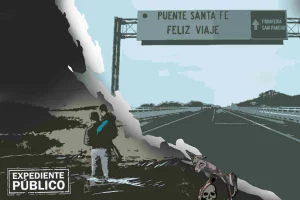* The second stage of Surf City is Bukele’s most announced tourism project, but it involves the eviction of thousands of farmers.
** Nayib Bukele’s government ignores the reports of threats and persecution by armed subjects against the villagers.
*** Artisanal fishermen in El Salvador are being harassed by tourism and real estate development companies that invade protected natural areas.
Eric Lemus / Expediente Público
El Icacal, 142 kilometers east of San Salvador, began to be besieged a year ago by companies that claim ownership of the coast, although they do not have a title that validates their claim.
The population lives in front of a beach with calm and paradisiacal waters in the coastal district of Intipucá, in the department of La Unión Sur, in the far east of El Salvador, which encompasses the Gulf of Fonseca.
A fishing community has existed there for six decades, along with a protected natural area, a mangrove forest that balances the marine ecosystem.
The non-governmental organization Movimiento Indígena para la Integración de las Luchas de los Pueblos Ancestrales de El Salvador (MILPA, Indigenous Movement for the Integration of the Struggles of the Ancestral Peoples of El Salvador), which took Expediente Público to the disputed place, reported that the community of artisanal fishermen lives in fear of the actions of the company Desarrollos Turísticos del Pacífico S.A. de C.V.
Subscribe to the Expediente Público newsletter and receive more information
Expediente Público confirmed that the information of this company is not available in the commercial registry listed in the database of the National Registry Center (CNR).
Population vulnerable due to Surf City
El Icacal is home to a thousand inhabitants derived from 75 family groups that have lived there for three generations. Many of its original inhabitants fled poverty by emigrating to the U.S., but they always return to the corner where they grew up or left their loved ones.
In context: Salvadoran Pacific communities fear forced displacement
Carlos Hernández, a resident and representative of the affected families, laments to Expediente Público that “historically we have suffered the usurpation of our properties by landowners and now by real estate and tourism companies”.
“They are using private security personnel who arrive with hooded men to intimidate the residents so that they evict their homes,” confirms one of the affected artisanal fishermen.
Surf City developer without title
The coordinator of MILPA in the eastern zone, Ángel Flores, explains to Expediente Público that they have investigated the title wielded by Desarrollos Turísticos del Pacífico S.A. de C.V.; however, they discovered that they do not have property deeds for the lands they claim.
“From inquiries that we as an organization have carried out, we see that the entire sector does not appear with a deed (of property) as a result of the whole situation that has historically occurred there in the area,” says Flores.
“But neither does the company Desarrollos Turísticos del Pacífico appear with any deed in its name. If it (a document in its favor) were to come out, it would be strange and would imply the complicity of government agencies,” he adds.
A hidden treasure
Expediente Público went into the protected natural area and confirmed that barbed wire fencing and the clearing of mangroves were taking place inside the nature reserve.
The access to this hidden beach was a rustic street, but on May 12, 2024, President Nayib Bukele sent the staff of the Directorate of Municipal Works (DOM) to pave 2.4 kilometers and turn it into a fast road that even crosses the mangrove reserve.
Humberto Gómez, who arrived that day on behalf of the Government, said that “with this new street it will be possible to properly mobilize the products of the fishing merchants”.
The execution of the DOM, which had a value of 1.4 million dollars, also placed three mounds, two speed bumps, signage and a curb and gutter along 4.7 kilometers to benefit 11,000 inhabitants through the promotion of tourism.
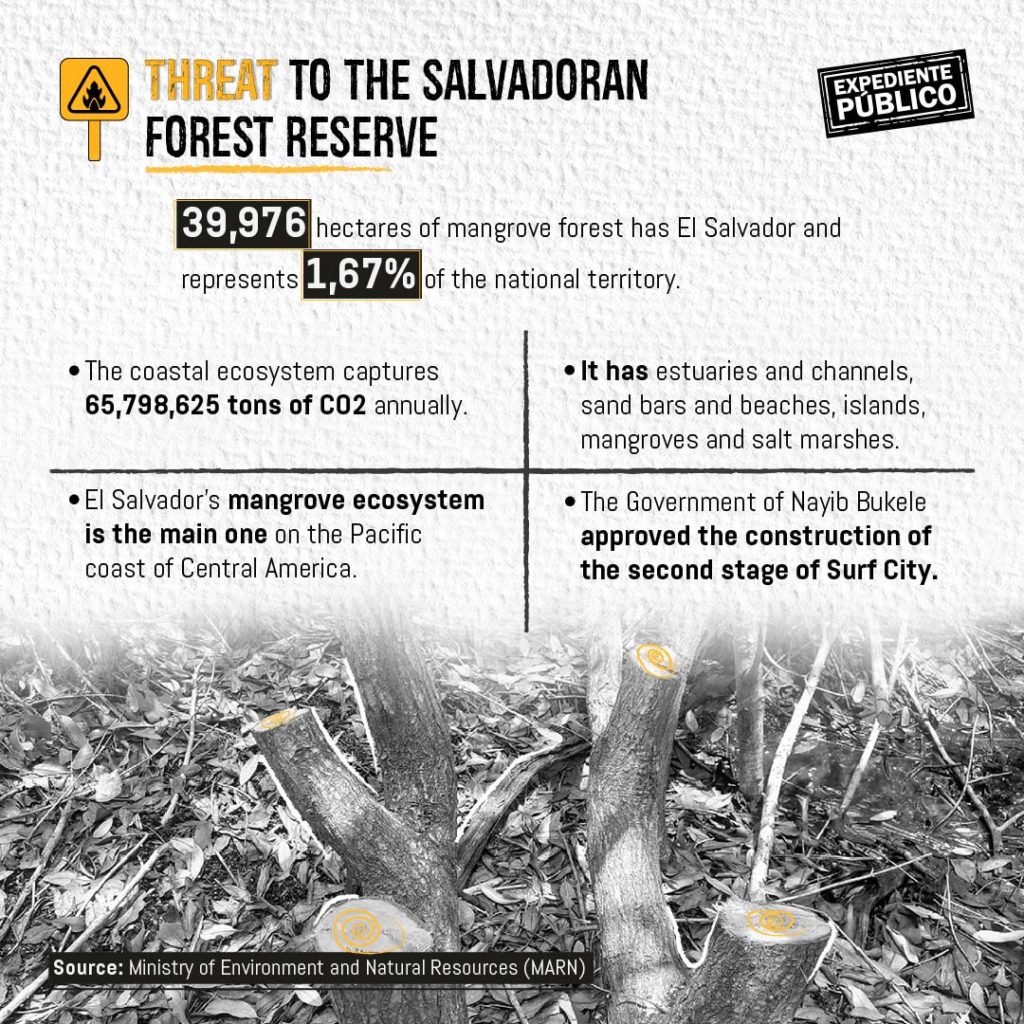
César Artiga, who belongs to the Association of Generations of Peace (Asdepaz), tells Expediente Público that this work excited the residents.
“They believe that President Bukele ignores that they want to evict them when in reality he is the one who orders the works of Surf City,” he says.
A marine biological treasure
The salt marsh has trees up to 20 meters tall that constitute a barrier that protects the degradation of the riverbanks and, at the same time, is home to an important biodiversity of different coastal-marine species, as well as 78 types of birds, according to eBird’s count, the project of the Cornell Laboratory of Ornithology.
However, a crew of young men cut down at least 100 trees from the salt marsh in April 2024, which they then used to place the fences with barbed wire that stops farmers from entering their cultivation areas.
The case was reported to the authorities because El Icacal is one of the 33 sites classified as a protected area, according to the Marine Protection Atlas registry carried out by the Institute of Marine Biological Conservation (MCI).
The MCI is a U.S.-based nonprofit organization that was created to identify and protect vulnerable ocean ecosystems around the world.
The richness of salt marshes
In the late 60s, according to the fishermen, this reserve was occupied by a mid-ranking military man who even built a lavish property next to the Esterón, an eye of brackish and crystalline waters.
“The man came with soldiers and we just had to watch, but at least he let us continue to live from agriculture and fishing”, Héctor Moreira, who survives on artisanal fishing, recalls to Expediente Público.
The humidity of the salt marsh overwhelms those who enter this place, but as you walk towards the Esterón, the biodiversity is rich in crustaceans and mollusks that make up a biological corridor from which the 78 types of birds that nest in the area are nourished.
The silence is only broken by the swaying waters of the Pacific Ocean that caress this hidden part of the Gulf of Fonseca, the region in the far east of El Salvador that it shares with neighboring Nicaragua and Honduras.
In search of due process
On May 28, residents and members of the MILPA organization went to the Attorney General’s Office (FGR, Fiscalía General de la República) to file a notice because they are victims of harassment, persecution, and intimidation by armed subjects, who destroy the salt marsh.
Expediente Público requested information from the institution about this case, but the prosecutor’s office did not respond.
Article 117 of the Constitution of the Republic defines that it is the duty of the State “to protect natural resources, as well as the diversity and integrity of the environment, to guarantee sustainable development”.
The coordinator of MILPA does not hesitate to tell this media that there is a real estate sector that is behind the violent actions.
You may be interested in: Environmentalists and indigenous people in El Salvador reject hydroelectric project for losing access to water
The government of Nayib Bukele, which began a second five-year term on June 1, promotes foreign capital investment in the coastal-marine strip as part of phase two of Surf City.
Expediente Público confirmed that the subjects are housed in a house of a government environmental protection program.
In fact, they built a metal gate that they close discreetly and ride around on motorcycles while recording with their cell phones. During our research, the subjects followed our movements.
A coast turned into a resort?
The execution of the second part of Surf City includes large-scale works such as the asphalting of the coastal road and the paving of the rustic access to practically unknown beaches, which are in three departments in the east of the country: Usulután, San Miguel, and La Unión.
The three provinces suffer from chronic neglect and lack sustainable economic and social development, according to Ángel Flores, whose organization witnesses the transformation of fishing communities as they build private ranches and hotels as a bet on foreign tourism.
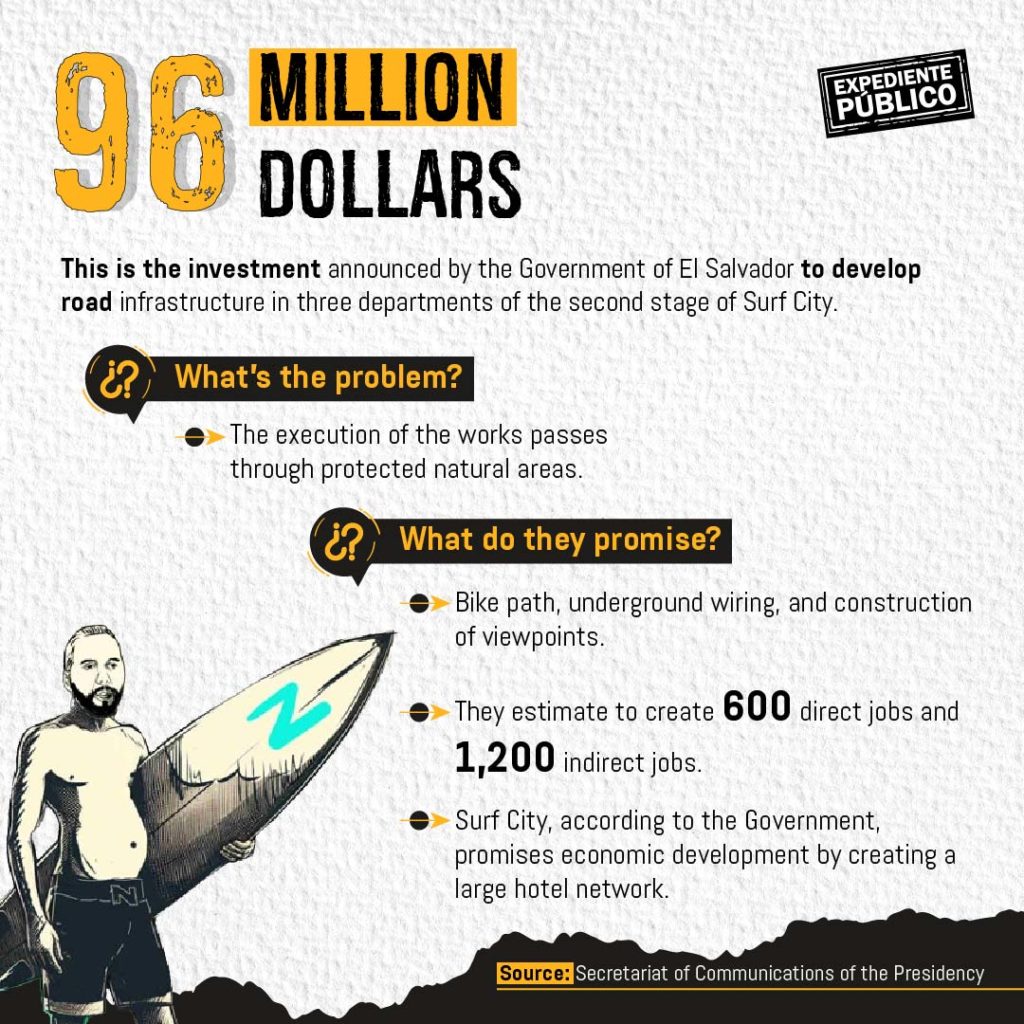
A crossing made on this road confirmed the installation of a hotel network that even prevents public access to the beaches.
César Artiga, from Asdepaz, told Expediente Público that “they are even privatizing the free entry of locals who are left without their livelihoods because they can no longer enter the sea to go fishing”.
Beaches, free access?
According to the Salvadoran Constitution, access to the beaches cannot be restricted, however, on the highway parallel to Punta Mango, in the municipality of Jucuarán, in Usulután, private ranches follow one after the other without access to the coast.
Bukele’s government promotes what it calls “reverse migration” through the ambassador stationed in Washington, Milena Mayorga, a former beauty queen who represented El Salvador in the last century.
Recently, Mayorga presided over the inauguration of a hotel complex in that area that covers the Gulf of Fonseca.
María José Solís, a Salvadoran resident in Virginia, USA, together with her spouse of Ecuadorian nationality, invested 3 million dollars in the construction of Mariposa Beach Club.
“This type of tourist space is inaccessible to the budget of a Salvadoran whose average salary is around $350 a month. They seek to attract above all the nostalgic diaspora that comes to the country for a couple of weeks. That is an ephemeral bet,” opines Artiga, of Asdepaz.
Bukele wants to consolidate the east coast of this small Central American country as an international destination.
A local airport on the horizon
Surf City includes the construction of the Pacific Airport and intervention in the Port of La Union with capital participation from China.
However, the environmental impact derived from the heavy rains that hit El Salvador is playing against the government’s plans.
Also read: Tourist wharf in El Salvador: 24 million secrets in Chinese investment
Several sectors paved by the DOM did not resist the advance of the overflowing rivers and isolated residents.
The organization MILPA denounced the increase in the vulnerability of the inhabitants, claiming that “despite the interest in promoting mass tourism in the coastal-marine strip, the effects on the living conditions of the inhabitants have not mattered”.
The impact of the first rains is devastating so far, according to Flores as he tours the affected areas.
“It is a consequence of poor management of the use of the territory with the construction of infrastructure without considering the settlements and the existing natural environment,” he laments.

